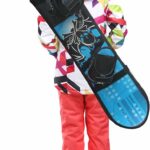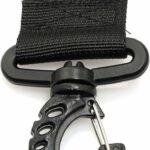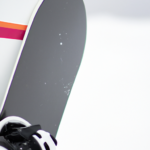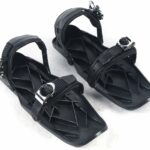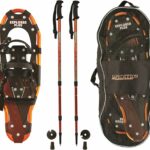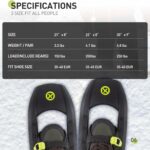Imagine you’re about to venture out into the picturesque hills layered with fresh snow, with your snowboard eager for the downhill glide. But, there’s a pressing question that might make your heart flutter – How high should your snowboard be on you? The article is poised to provide you with sought-after insights to answer this crucial question, ensuring that you have the most thrilling, safe, and efficient snowboarding experience. Strap in for an enlightening ride as we tackle the topic that can make or break your winter sports experience.
Determining Snowboard Height Based on Rider Height
Snowboarding is a thrilling winter sport, but to get the most enjoyment out of it, you need to have the right gear. A fundamental part of this gear is the snowboard itself. To choose the best snowboard for you, one essential factor you need to take into account is your height.
Understanding the general rule-of-thumb
It’s critical to understand that there is a basic rule of thumb as you embark on selecting an ideal board. This rule suggests that when standing upright, the top of the snowboard should reach somewhere between your chin and nose. Is this a flawless standard? No, but it provides a solid starting point for new riders or those unfamiliar with choosing boards.
Effects of height on board performance
Your height directly impacts your snowboard’s performance. A shorter board tends to be lighter and more maneuverable, making it ideal for freestyle riding or tackling tight slopes with many turns. Conversely, a longer board offers more stability at high speeds, excelling in open terrains with long runs.
Examples of snowboard height based on rider height
To give you a rough idea, a rider who’s about 5-foot tall would want a snowboard that’s approximately 140 centimeters in length. If you’re around the 6-foot mark, a board measuring upwards of 160 centimeters would be a more suitable option. Remember, these are rough estimates; several factors may adjust these numbers up or down.
Taking Rider Weight into Consideration
Weight is another parameter you must consider when choosing your snowboard. Ignoring your weight might lead to an unsatisfactory riding experience and potential performance problems.
Importance of rider weight
Your weight determines how much pressure you’ll exert on the snowboard when riding, impacting its flex. Too much weight on a board that’s too small will result in excessive flex, making the board feel sluggish. In contrast, too little weight on a large board won’t create enough flex, making the board tough to control.
Weight considerations for different snowboarding styles
Riders who prefer a freestyle approach might select a shorter board, allowing for tricks and jumps, despite their weight. On the other hand, riders who enjoy freeride snowboarding and relish speed and large turns would opt for a longer snowboard to match their weight.
Selecting the right snowboard length for your weight
Manufacturers often provide weight charts for every snowboard model, assisting you in getting a precise length. If possible, use these charts since they take into account the specific design and building materials of the board, leading to a more accurate board recommendation.
Considering Riding Style and Terrain
The terrain you’ll be riding on and your snowboarding style can significantly influence your snowboard length choice, regardless of your height and weight.
Impact of riding style on snowboard height
If you’re into freestyle snowboarding, you’ll likely gravitate towards a shorter, lighter board, making tricks easier. However, for freeride snowboarding or powder riding, a longer board is typically more suitable, as it gives better control and stability at higher speeds.
Choosing the right board for your preferred terrain
Also, the terrain you typically ride can guide you towards a fitting board size. More complex terrains with tighter turns and natural features benefit from a shorter, more agile board. On the other hand, Open and steep terrains usually call for a longer, more stable board.
How terrain and style can alter the ideal snowboard length
Bear in mind, your preferred terrain and style could increase or decrease your snowboard’s recommended length by up to 5-7 centimeters. This considerable difference means you should analyze and understand your preferred riding style and terrain before settling on a snowboard length.
The Role of Snowboard Width
While length gets the majority of attention, don’t forget the snowboard’s width. Width affects your control over the board and how smoothly it turns.
Balancing board width with board length
A snowboard’s width should complement its length, creating an optimal ride. A too-narrow board may cause your toes or heels to overhang, causing drag and unwanted turning. Too wide, and the board becomes hard to tilt, slowing down side-to-side transitions.
Weight distribution on wider snowboards
Generally, a wider board will give you a larger surface area. This surface can be advantageous for heavier riders as it spreads the weight more evenly, making the board more stable. However, it can also slow down your edge-to-edge transitions due to the increased width your feet have to move.
Relevance of boot size on snowboard width
Also, your boot size often determines the need for a wider board. Riders with larger foot sizes (typically around US Men’s size 11 and up) often require wider snowboards to prevent toe and heel drag. Ensure your snowboard allows your boots to sit comfortably on its width without any overhang.
Examining Personal Preference and Comfort
Even with all the mentioned factors, personal preference and comfort play a profound role in selecting the perfect snowboard height.
Reasons why personal comfort matters
Snowboarding should be an enjoyable and comfortable sport. If a perfectly sized board doesn’t feel right to you, or you struggle to maneuver it, then the size should be reconsidered. Always prioritize your comfort and confidence on the board.
Adjusting snowboard height for personal preference
If you feel more confident and comfortable on a shorter or bigger board than recommended based on your height, weight, or style, go for it. Remember, all the rules and guidelines are flexible and meant to assist you, not restrict you.
Weighing your comfort against professional advice
While considering your personal preference, also reflect on professional advice. If you’re new to the sport, give precedence to professional guidance before deviating too much based on your comfort and preference. Once you gain riding experience, you’ll have a better understanding of what works best for you.
Impact of Snowboard Height on Performance
The size of the snowboard you select will impact your performance on the slopes. Getting this right can enhance your snowboarding experience.
How snowboard height affects handling
The height of your snowboard affects all aspects of handling. A shorter board is generally easier to steer and maneuver, particularly at low speeds. This agility makes them fantastic for quick turns and tricks, but they may lack stability at high speed. In contrast, a longer board provides stability and control at high speeds but may feel heavy and slow to turn.
Snowboard height affecting speed and turn radius
Snowboard height also affects your speed and turn radius. Greater speed and larger turn radii are easier to achieve on larger boards due to more surface area in contact with the snow. On the flip side, shorter boards make for smaller turn radii and can feel less steady at high speeds.
Balancing performance and comfort in snowboard height choice
Performance should not overshadow comfort in the pursuit of perfect snowboard height. Your aim should be to find a balance between a board that enhances your performance while still being comfortable to ride.
Debunking Myths about Snowboard Height
With all the buzz surrounding the selection of the perfect snowboard height, several misconceptions crop up.
Common misconceptions about snowboard height
One common myth associates larger boards with more advanced riders. However, board size is not always a reflection of skill level. Another misconception is that taller riders need longer boards. While there might be some truth to this, it does not consider factors like rider weight, riding style, or personal preference.
Practical effects versus theoretical ideals
Understanding the practical effects of snowboard height against theoretical ideals can be critical. In theory, specific rules apply for snowboard height, but how they work in practice is often dependent on the individual rider. So, don’t get too caught up with adhering strictly to these rules. It’s more important to focus on what feels right for you on the slopes.
Importance of personal experimentation in choosing snowboard height
Given these myths, personal experimentation becomes crucial. Only by trying different snowboards can you truly find what works best for you. Don’t hesitate to experiment on rented boards or borrowing from friends before committing to buy.
Choosing the Right Snowboard for Beginners
If you’re just beginning your snowboarding journey, the vast array of board sizes can seem daunting. To help, here are some recommendations tailored to beginner riders.
Basic principles for beginners
As a beginner, the key is to pick a snowboard that encourages easier learning and control. Generally, a softer and shorter board will be more forgiving and easier to handle, making it ideal for your first rides.
Importance of ease of maneuverability
Maneuverability is vital to beginners. It not only makes learning easier but also encourages confidence-building. A shorter board provides this maneuverability, making it easier to grasp the basics of turning and control.
Recommendations for starter snowboard height
As a handy beginner guide, a board reaching up to your chin is a good starting point when standing upright. This height offers a nice balance between control and stability, forgiving enough for beginners to learn, yet still performance-focused as your skills develop.
Adapting Snowboard Height for Experienced Riders
For seasoned riders, your board selection may look a little different as you’ve grown familiar with your style and preferences.
Different needs of experienced riders
As an experienced rider, you may desire more from your board than the basics. You might want a board that complements your specific riding style and can handle diverse terrains. As such, you may find yourself straying from basic board selection rules to satisfy your unique needs.
Experimenting with different board sizes as skill advances
As a pro, you can experiment more with the snowboard sizes. You might want to try a longer board for those daring downhill runs or a shorter one for that freestyle park action. Strive to optimize your board to your riding, rather than strictly to your physical attributes.
How riding style evolves with experience
As you progress, your riding style tends to evolve. You may start inclining towards a particular type of riding, be it freeride or freestyle, which might require adaptability in your board selection. It’s a dynamic journey, and your snowboard height should reflect that.
Final thoughts on Snowboard Selection
Choosing the right snowboard isn’t an exact science but an art that involves weighing different factors.
Key considerations in summary
In summary, your height, weight, and shoe size affect your snowboard length and width. The terrain and your riding style also play a crucial role, and above all, your comfort and preference should guide you.
Guidance for your next snowboard purchase
Remember these insights as you embark on buying your next snowboard. It’ll not only guide you in making an informed decision but also ensure you pick a board that elevates your snowboarding experience.
Remembering that there’s no one-size-fits-all solution
Lastly, always remember that there’s no one-size-fits-all solution in snowboarding. It’s crucial to find a snowboard that fits you best in stature, style, and comfort. Happy snowboarding!
- What Snowboard Bindings Should I Get? - January 23, 2024
- What Size Screws For Snowboard Bindings? - January 23, 2024
- How To Snowmobile On Water? - January 23, 2024

